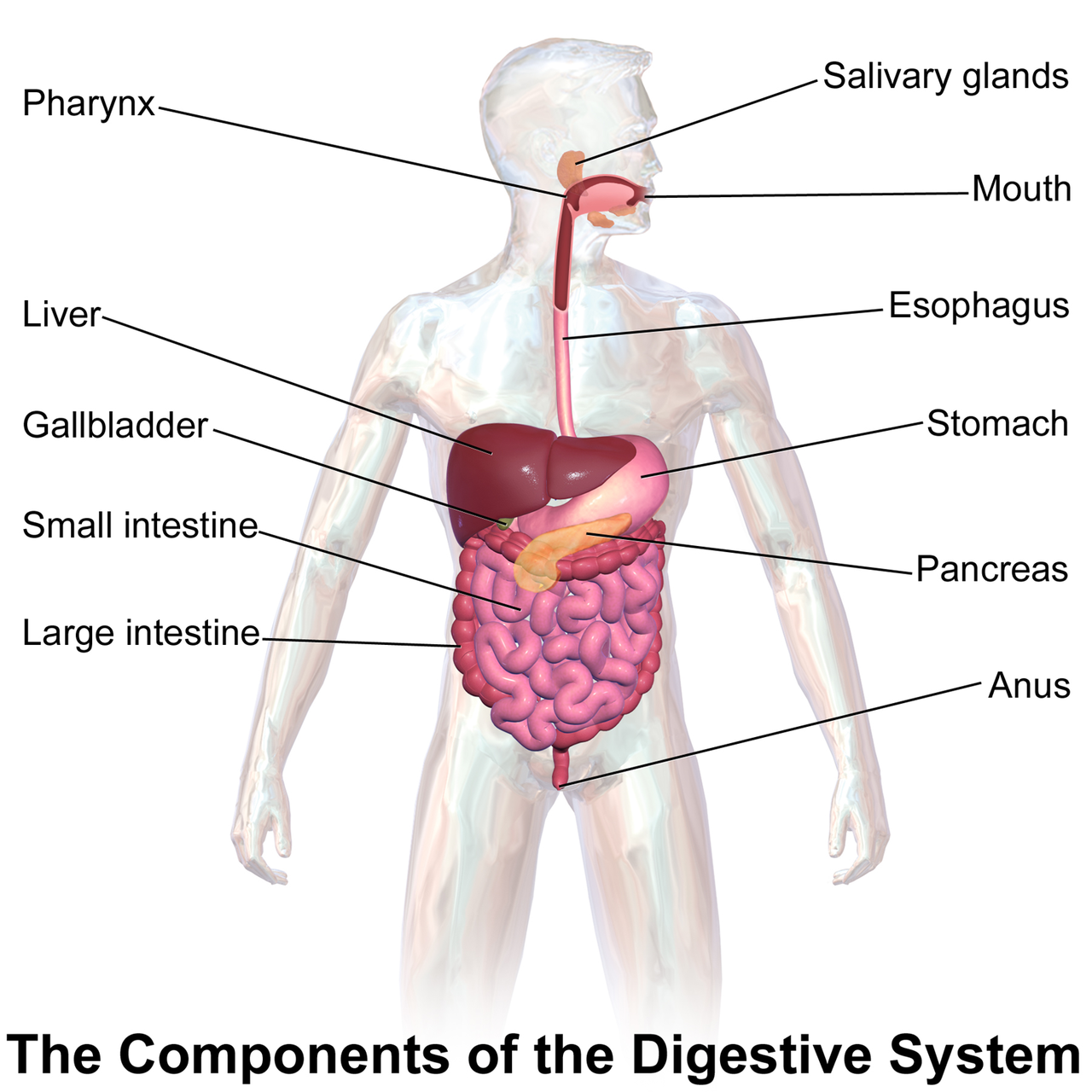By The Landlord
“The road to health is paved with good intestines.” – Sherry A. Rogers
"You can only hold your stomach in for so many years." – Burt Reynolds
"Your gut is always right." – Sharon Osbourne
"I have flabby thighs, but fortunately my stomach covers them." – Joan Rivers
"Sometimes there is a 36-piece orchestra going off in my stomach." – Willie Nelson
"I still use the guitar pretty much just to hide my gut." – Garth Brooks
"An army marches on its stomach," came that famous truism of military genius Napoleon Bonaparte, and of course while we know what he means, my hungry imagination still I can't help but picture a vast cohort of eels and snakes in bright uniforms slithering a strange march across the landscape.
So this week from the flabby to the ripped, the swollen and rumbling, it's all about the stomach, the guts, the intestines and the magical digestive system, not only in literal lyrics, but also as metaphor, from gut feelings to stomach butterflies, capturing all sorts of instinctive, subconscious or surface feelings. While there's so much emphasis on the brain and the heart, the stomach and intestines are often overlooked, and yet they really are the second brain of our bodies.
And that's not just a metaphor - buried deep inside our intestines, there's a long, thin layer of brain cells similar to those in our heads, more than 100 million neurons known as the enteric system - with the equivalent intelligence to a cat or dog. Our guts really do have brains. No wonder then that it's so responsive, moody and full of charisma, and plays such a vital role in our lives. It needs constant attention, feeding, and maintenance. This second 'brain' is constantly busy - conducting the complex and messy orchestra of digestion and moderating pain.
And alongside that, there's a vast army of 50 trillion microbial bacteria from at least 1000 species, at least half of which are non-human, making up an internal ecosystem – our own fertile, moist, constantly moving squelchy rainforest. So there's many a rumble in our jungle, and these creatures have a symbiotic relationship with us - managing food that passes through they help regulate our bodyweight, extract energy, direct our cravings and moods, determine blood sugar spikes, converts other food into hormones and other chemicals, and protect the area from invaders and manage the immune system. Of course, with the onslaught of unhealthy foods, these internal 'friends' struggle.
Of course there are endless numbers of books about diet and digestion and there's not space to get into all that here, but songs that talk about the effect of the guts on eating certain foods will count.
But among the advice: “Live dirtier, eat cleaner," advises Robynne Chutkan, author of The Microbiome Solution: A Radical New Way to Heal Your Body from the Inside Out, with direction not only about food, but also in building up the immunity system.
"Almost nothing influences our gut bacteria as much as the food we eat. Preboiotics are the most powerful tool at our disposal if we want to support our good bacteria - that is, those that are already there and are there to stay," reckons Giulia Enders, author of Gut: The Inside Story of Our Body's Most Underrated Organ.
Our stomachs of course make up some of the oldest parts of us, not only in evolutionary terms, but formed first, alongside the brain, before we're even born, and represent our link with our mothers and and beyond. Ilchi Lee, in his book Belly Button Healing: Unlocking Your Second Brain for a Healthy Life, also describes the ecosystem, and points out how the "belly button is not simply a trace of my birth, but a precious seal and a mark, a reminder of my connection with the source of life and all life forms.”
Subconsciously or consciously, we think about our guts all the time, and often take them for granted, but as we control them with what we eat, they in turn really do control us. Culturally there's a diversity in thinking about big or small stomachs. In the west, we yearn for flat and ripped, and are self-conscious about the flabby, but in other cultures, particularly the far east large bellies are seen as a sign of wealth and happiness. It's odd then that when we say things have gone "belly up" it means they have gone wrong, surely that should be belly down?
Homer Simpson’s famous rumbler
But let's go the the exploratory science section. Dr Michael Mosley, a regular BBC presenter and TV doctor, and author of various books including The Clever Guts Diet, in 2016 underwent an experiment at London's Science Museum to watch a large pill-sized camera pass through his guts for several hours, through chasms of contractions and muscles, describing his stomach as "a cavernous, exotic landscape - pulsing and throbbing with movement. It was pink and pulsatile, a place of slobber and rawhide. When it is empty, the mucosa that lines the stomach is thrown up in folds like a boggy marsh. It reminded me of the surface of Mars. Except slimier. And much more active."
No wonder it took several hours to travel through, even though Mosley also swallowed plenty of liquid laxative. Including what's known as the valves of Kerchkring (named after 17th-century Dutch anatomist Theodor Kerckring), the small intestine is about 6 metres, or 20 feet long, and then the large intestine is about 1.5 meters or 5 feet long, but one human system, if unfolded, would cover a tennis court. Featuring gastric juices of mainly hydrochloric acid and pepsin, the guts are an epic journey of processing and distribution requiring a miracle of micro- and macro-management. One reason we have such long intestines comes from our origins as mainly plant eaters, needing a full digestive process.
And of course other animal guts and stomachs and far more complex systems. Ruminants, such as reindeer, giraffes and cows have four stomachs allowing a system of storage, regurgitation and re-chewing. Sloths have four stomachs too taking up to a month in their very slow metabolism. Camels have three, and so do ostriches, kangaroos, alligators have two, but The Baird’s Beaked Whale has up to 13 stomachs with a long series of connecting chambers.
But much of this week's topic will be about the feelings, literal or metaphorical, of the guts expressed by songwriters, and how the body and mind might control each other.
The Russian and Soviet experimental neurologist, psychologist and physiologist Ivan Pavlov, best known for his discovery of classical conditioning through his experiments with dogs, describes how the stomach acids are stimulated by the mere sight and smell of food, "the food even not reaching the stomach, determines the stimulation of the gastric glands".
We are highly sensitive to such mental and physical gut responses, and so it's no wonder that Afred Nobel, he of the prizes, declared that: "Worry is the stomach's worst poison".
So perhaps one of the most brilliant and tragic worriers of rock music, Kurt Curtain, also put his mental anguish in physical terms. He complained of scoliosis back pain, but also "I have a red irritation in my stomach. It's psychosomatic, caused by all the anger and the screaming."
"The heart, like the stomach, wants a varied diet," says Gustave Flaubert. Pain and creativity go together but how much hunger is healthy? "A hungry stomach cannot hear," says Jean de La Fontaine, entering our Bar and perusing the menu. "A kid cannot learn with an empty stomach," adds Shakira, making a point about poverty and education.
But it's a delicate balance. The brilliant improvising rapper, comedian and musician Reggie Watts is also in the house, and says "I try not to eat right before I perform. It's better to perform on an empty stomach - it just feels better. You just feel like a leaner machine. You're not worrying about digesting things."
Joan Jett, meanwhile, thinks about her guts in terms of performance nerves. "You want to have butterflies in your stomach, because if you don't, if you walk out onstage complacent, that's not a good thing."
"Well, I write from my stomach," says the groundbreaking film director Paul Thomas Anderson, and here you guess he's not really talking about food.
So it's time for you, dear readers, to digest all this, and write and suggest songs from your guts about this subject. And for inspiration, let's leave you with a photo of one of the most famously exposed stomachs in rock, that of Iggy Pop, who for many years was ripped and slim, but whose tummy now resembles a charismatic, half-frowning, half-smiling face, creating its own form of personification and pareidolia, harking back to another topic from four years ago.
Gutsy performer: Iggy’s charismatic frowning stomach
This week’s doctor of the the musical stomach, who no doubt will mix detailed analysis with gut feeling is the learned Marco den Ouden! Please place your offal offerings in comments below in time for the deadline at 11pm UK time on Monday, for playlists published next week. Go with your guts.
New to comment? It is quick and easy. You just need to login to Disqus once. All is explained in About/FAQs ...
Fancy a turn behind the pumps at The Song Bar? Care to choose a playlist from songs nominated and write something about it? Then feel free to contact The Song Bar here, or try the usual email address. Also please follow us social media: Song Bar Twitter, Song Bar Facebook. Song Bar YouTube, and Song Bar Instagram. Please subscribe, follow and share.
Song Bar is non-profit and is simply about sharing great music. We don’t do clickbait or advertisements. Please make any donation to help keep the Bar running:






